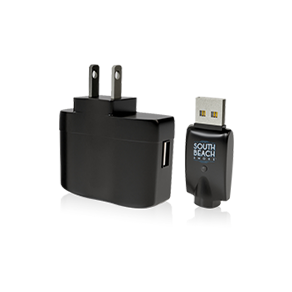- A
- B
- C
- D
- E
- F
- G
-
H
Holiday Vape Gift Guide How Do E-Cigarettes Work? How Long Do Vape Batteries Last? How Long Does Nicotine Stay In Your System? How to Deal with Smoking Relapse How to Manage Cravings and Withdrawal Symptoms When Switching to E-Cigarettes How to Pick the Right E-Cigarette Starter Kit for You How to Properly Use & Maintain Your E-Cigarette Device How To Troubleshoot Your Vape Pen Cartridge
- I
- J
- K
- L
- M
- N
- O
- P
- Q
- R
-
S
Shipping E-Cigs to Your City South Beach Smoke Mother's Day Vape Gift Guide South Beach Smoke Valentine's Day Vape Guide 2023 South Beach Smoke vs Logic E-Cigs South Beach Smoke's E-Cig Nicotine Delivery Program Spring Break Travelers E Cig Guide Summer Vape Guide 2022 Switch to Vaping to Beat the Cold
-
T
The Best Vape Pen Juice Flavors The Best Vape Temperature The Environmental Impact of Switching from Cigarettes to Vapes The Rise of Vaping Culture The Science Behind Vaping The Top Vape Influencers The Ultimate Guide to Transitioning from Smoking to Vaping: Common Mistakes and How to Avoid Them Throwing a 4th of July Vape Party Guide Tips for Vaping in the Heat Top 5 Must-Have E Cig Accessories Top 5 Vaping Blogs to Follow Top 5 Vaping Blogs to Follow Top Celebrities Who Vape 2022 Troubleshooting Common E-Cig Problems Troubleshooting Common E-Cigarette Problems
- U
-
V
Vape & Vape Juice Delivery to Your City Vape Battery Maintenance Vape Birthday Gift Guide Vape Pen Not Charging FAQ Vape Pod Vs Cartridge Which Is Better? Vape vs E Cig Comparison - Are E-Cigs and Vape Pens the Same? Vaping Abroad Vaping Etiquette - How to Vape In Public Vaping Facts vs Vaping Myths
- W
- X
- Y
- Z
- #
The Science Behind Vaping
As traditional cigarette smoking continues to decline in popularity, vaping has soared as a compelling alternative. With a variety of flavors and the flexibility to control nicotine levels, e-cigarettes have captivated a growing number of consumers. However, how many of us really understand how vapes work? In this comprehensive guide, we'll delve into the science behind vaping, focusing on its mechanical aspects.
What is Vaping?
Vaping is the act of inhaling vapor generated by a device known as an electronic cigarette or vape. Originating in the early 2000s, vaping provided smokers with a less harmful alternative, free from the tar and harmful chemicals found in traditional cigarettes.
Key Components of Vaping
When you puff on an e-cigarette, there are four main components that work together to produce the vapor you inhale:
- E-liquid: Also known as vape juice, this liquid contains nicotine, flavorings, and other chemicals.
- Atomizer: This is the heating element that turns the e-liquid into vapor. Understanding how atomizers work is crucial for anyone looking to become a vaping aficionado.
- Battery: Powers the atomizer and is usually rechargeable.
- Mouthpiece: The part through which the vapor is inhaled.
Vaping Prevalence
According to recent statistics, approximately 55 million adults worldwide have adopted vaping, and the number is on a steady rise. With such a massive following, it's crucial for both newcomers and long-time vapers to comprehend the science that makes vaping possible.
The Basics of Vape Devices
Different Types of Vape Devices
Vaping devices have evolved significantly over the years, diversifying to meet the unique preferences of vapers. There are primarily three types of devices:
- Pod Systems: Compact and easy-to-use pod systems are ideal for beginners and for those who prefer a less complex vaping experience.
- Vape Pens: These are larger than pod systems and offer more customization. They're a popular choice for intermediate vapers.
- Box Mods: The most customizable and powerful of the lot, box mods are designed for seasoned vapers who know how vapes work mechanically and desire a personalized experience.
How They Work: The Science of Vaporization
To understand how vapes work, one must first comprehend the science of vaporization. When the device is activated, the battery powers the atomizer, which then heats the e-liquid to a point where it turns into vapor. This vapor is what you inhale and exhale, simulating the act of smoking without the harmful byproducts of tobacco combustion.
Safety Mechanisms in Modern Vape Devices
Modern vaping devices come with a host of safety features, including:
- Overheat Protection: This feature monitors the device's temperature and prevents it from getting too hot. If the device senses an unsafe temperature, it will automatically shut off, reducing the risk of both device failure and potential injury.
- Short-circuit Protection: In the event of a short-circuit, this safety feature instantly detects the problem and interrupts the electrical flow. This not only protects the device from damage but also minimizes the risk of fire or explosion.
- Auto Shut-off Features: To conserve battery and enhance safety, many vape devices come with an automatic shut-off feature. If the device is inactive for a certain period, it will automatically turn off, ensuring it's not accidentally activated inside a pocket or bag.
- Battery Management Systems: Advanced battery management systems regulate the power output, ensuring consistent performance and extending the lifespan of the battery. They also monitor the battery's health and will alert the user or shut down the device if a battery issue is detected.
The Chemistry of E-liquids
Primary Ingredients
E-liquids, or vape juice, are intricate solutions that play a pivotal role in the vaping experience. Understanding the chemistry of these liquids can offer insights into their safety, performance, and the sensations they offer to the user. E-liquids consist of four primary ingredients:
- Propylene Glycol (PG): This is a colorless, odorless liquid that serves multiple roles. It acts as a flavor carrier and contributes to the 'throat hit' that many smokers crave. On a molecular level, PG has a lower viscosity than VG and is more effective at dissolving flavors and nicotine.
- Vegetable Glycerin (VG): VG is a thicker, sweeter liquid compared to PG. It's responsible for the thick vapor clouds associated with vaping. VG is a humectant, meaning it retains moisture, which helps create a smoother vaping experience.
- Nicotine: Derived from the tobacco plant, nicotine is an alkaloid that stimulates the nervous system. In e-liquids, it comes in various concentrations to suit individual preferences. Its addictive nature is why many smokers find it challenging to quit, but also what makes vaping an effective smoking cessation aid for some people.
- Flavorings: E-liquids offer an array of flavor choices, ranging from traditional tobacco and menthol to exotic fruits, spices, and desserts. However, it's essential to note that not all flavorings are safe for inhalation, which is why it's crucial to purchase e-liquids from reputable sources.
When heated by the atomizer, these components undergo chemical changes. For instance, propylene glycol and vegetable glycerin are transformed into water vapor, while the flavors and nicotine are vaporized into a form that can be inhaled.
Conclusion
In this article, we've unraveled the science behind vaping. Understanding how a vape works mechanically, and the role of atomizers gives both new and experienced vapers valuable insights into their habit.
As vaping continues to attract millions worldwide, the importance of continued research can't be overstated. Investigating the long-term health impacts and continually improving safety features are crucial steps in ensuring that vaping remains a safer alternative to traditional smoking.
Vaping is more than a trend; it's a continually evolving science that seeks to offer a less harmful alternative to traditional tobacco smoking. As technology advances, so does our understanding of its complexities and potential.


